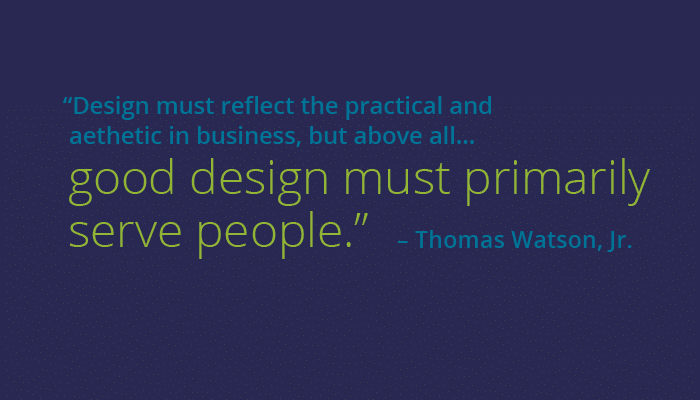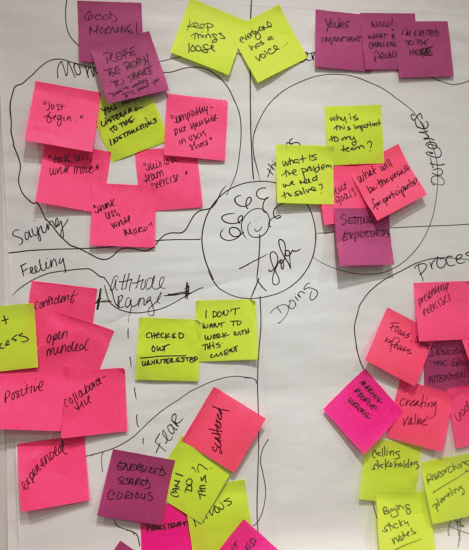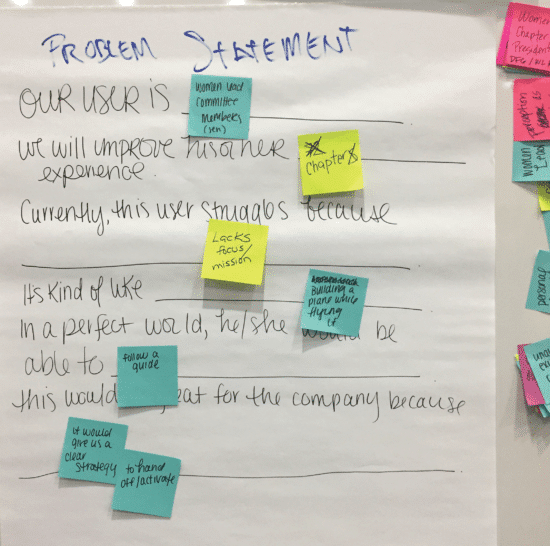Brand Insights
For Health Science Executives
Use design thinking to win more business and support
Use design thinking to win more business and support

How you can drive profits by putting people first
More and more, design is at the forefront of modern business. Fortune 500 companies are making big investments in it and creating new profit opportunities by applying the mindset and process of design, known as “design thinking.”
This philosophy uses the designer’s sensibility and methods to match people’s hopes, desires, challenges, and needs with technology and business strategies. As a result, organizations who use it are finding new ways to create customer value and market opportunities. This user-centered approach creates much stronger empathy and goodwill with buyers, thus making complex business and social issues easier to address.
Design thinking isn’t new. Design principles have inspired IBM and other organizations as far back as the 1950s. In 1966, Thomas Watson Jr., then president of IBM, made the observation that “Good design is good business.” But until recently, this approach was more often the exception than the rule. Today it’s becoming a significant movement throughout the business community.
Why design thinking matters
While design thinking is often perceived as a way to solve problems — which it’s very good at — it’s also a tool for organizations to discover the right problems to solve.
Like the scientific method, the design process studies real-world data to find practical, measurable, and repeatable solutions. This approach identifies new opportunities, not only to do good, but to generate new business.
Furthermore, design thinking doesn’t just solve problems. It creates a deeper relationship with customers.
This is important, because a stronger understanding of users leads to better business. Your organization stays focused on what buyers really want and need.

Empathy Mapping helps the group define and align on user needs by framing what each persona is thinking, feeling, doing and saying in their current position. Because your users are in the room, this exercise helps validate any assumptions you may have already made in your internal persona work.
Put it to work for your organization
A joint venture between IBM and AIGA, the professional organization for design, is working to expand the movement and grow the community of design thinking leaders. Only 120 AIGA members were selected for this exclusive leadership training. I was fortunate to be chosen as part of this ongoing project, and our own workshops are evolving to incorporate more of this user-centered approach.
Outcome-driven engagement and “radical collaboration” are the foundation of the process. Teams actively collaborate to solve problems in this way:
- Define the problem. The group agrees upon a real-world problem to work on.
- “Radical collaboration.” All key stakeholders are brought into the room — not just the internal marketing people and their agency. Users are key participants in this group since they’re the focus, and the process is super-active. Consequently you won’t see a facilitator sitting at the front of the room lecturing to a bunch of participants dozing in their chairs. It’s a true creative “work” shop.
- Identify user needs. The group uses empathy mapping and other techniques to pinpoint what users really need and want.
- Ideate. The group brainstorms ideas in a “blue sky” environment. In other words, no idea is “wrong” at this stage.
- Prioritize solutions. The group creates a strategic plan for 1, 3, and 5 years.
- Result. The team creates a meaningful outcome for everyone.

Problem statements describe the user’s needs, desires and goals, and align the team on the “right” issue that you will work on together to solve.
In conclusion
Involving users and understanding their needs continuously drives design thinking. Teams trained in this way learn that they must constantly observe users, identify their changing needs, and keep their solutions relevant. In short, “one and done” is never the answer.
Getting all the key stakeholders and users in the same room is a key part of this process. When that happens, it’s not just the marketing team and the agency driving profitable change. The team can only meet everyone’s needs if they work to achieve outcomes together. The result is happy users, happy employees, and a better world for all.
Contact us to learn more about our workshops and how your team can master and apply design thinking principles.